

Digestive system, stomach, oesophagus, small intestine, large intestine, rectum, anus, liver, saliva glands, pancreas, gallbladder, food processing, enzymes, breakdown, amylase, protease, pepsin, lipase, metabolism.
When we eat, our body processes the food through a system that breaks down food and removes nutrients for us to use elsewhere.
So, from the top, your food enters your mouth, and goes through the following organs:

The digestive system also uses and includes the following:

The stomach can hold between 1-1.5 litres (34-50 ounces) of food at any given time. In comparison, when you're relaxed and your stomach is empty, it can typically have between 6 1/2 to ten ounces of fluid in it. It varies because of different sized people and how much you generally eat.
The oesophagus: also known as the windpipe, is the part of the body that allows you to swallow food, and transports the food to the stomach.
Stomach: here, the food sits for a while being "decomposed" by acid known as bile. This is a strong acid, almost on the same level of pH as battery acid. The food here is digested and broken down to smaller molecules. While this happens, some of the nutrients are removed from the food groups and placed into the bloodstream or stored for later use.
Small Intestine: the small intestine. Aptly named due to it only being a few centimetres in diameter, it is actually very long, and can reach up to 7.6 metres (25 feet) in length. Here, it breaks down the food bolus (this is what the molecules of food are called from here on) and removed any missed nutrients from the food through a process called absorption, using the villi in the tube.
Large intestine: a wider and shorter length than the small intestine, the large intestine is split into four sections, including the cecum, colon, rectum (detailed below) and the anus (detailed below). It's primary function is to remove, through absorption, water and electrolytes from digestive residues. This process can take up to 30 hours, depending on the type of residue. It also houses the fecal matter until it is ready to be expelled.
Rectum: the rectum is one of the final stages of the digestive process, where fecal matter is stored before finally being expelled through excretion.
Anus: the anus, and the sphincter (a small muscle) are the very end of the digestive system that allows fecal material to be excreted.
Pancreas: the pancreas creates pancreatic juices which are types of enzymes used for protein breakdown.
Gallbladder: the gallbladder stores bile produced in the liver that is used in the intestines to neutralise the acidity of the hydrochloric acid in your stomach. It also helps to emulsify fats, which means that they are broken down in very small molecules.
The following still is from a video on the digestive system, with the following details:
Please click on the image to view the video.
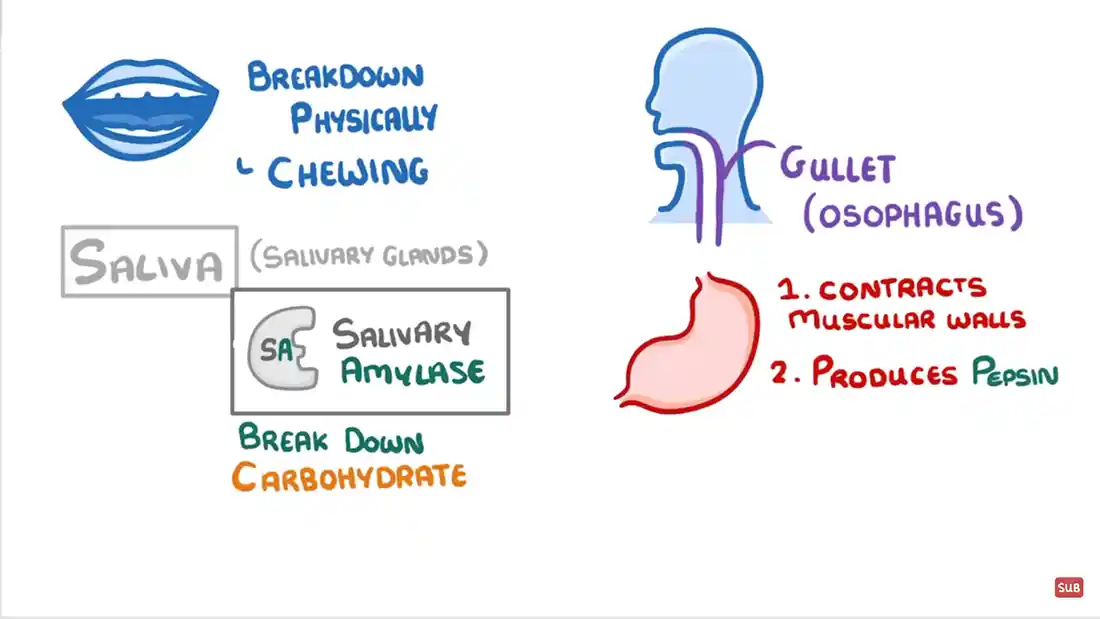
How is our food processed once we've eaten?
Once you've taken a bite of your food, what do you usually do? You chew it. But what happens to it after that?
Well, for this example we will call the bit of food you've eaten a food parcel. The food parcel moves down the oesophagus and into the stomach. When it sits in the stomach, it gets broken up into smaller pieces in order to pass through to the intestines. This process is done using acid, called bile. This bile is produced by the liver, and stored in the gallbladder until needed.
Once it is small enough to move into the small intestines, it does so. So, your food parcel up to here has moved down a food pipe, and sat in some acid to deteriorate into smaller chunks. Are we ready for what is next?
The following still is from a video on intestinal villi, with the following details:
Please click on the image to view the video.
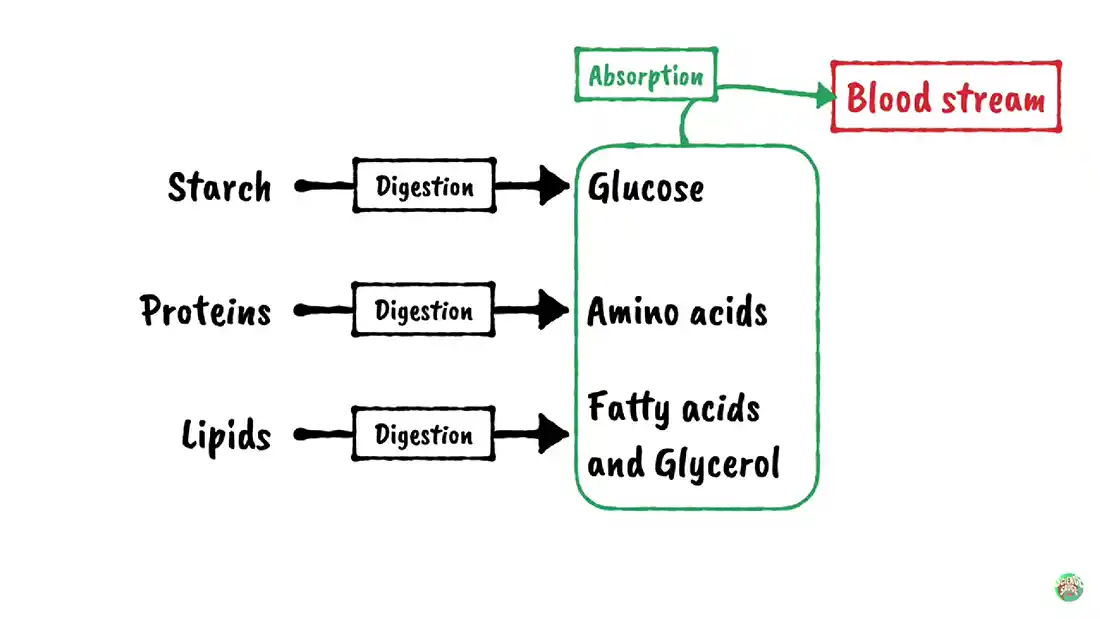
Once in the small intestine, the food parcel is subjected to nutrient testing. I'm going to call it that, as it is like a massive checkpoint. Your food parcel will have targeted minerals and nutrients that the body needs (vitamins, sugars, fats, etc), and the enzymes that work with it will break these down into products using an active site (please see the enzyme picture in the resource). This is done to make glucose and fructose from the food parcel.
The following still is from a video on enzymes, with the following details:
Please click on the image to view the video.
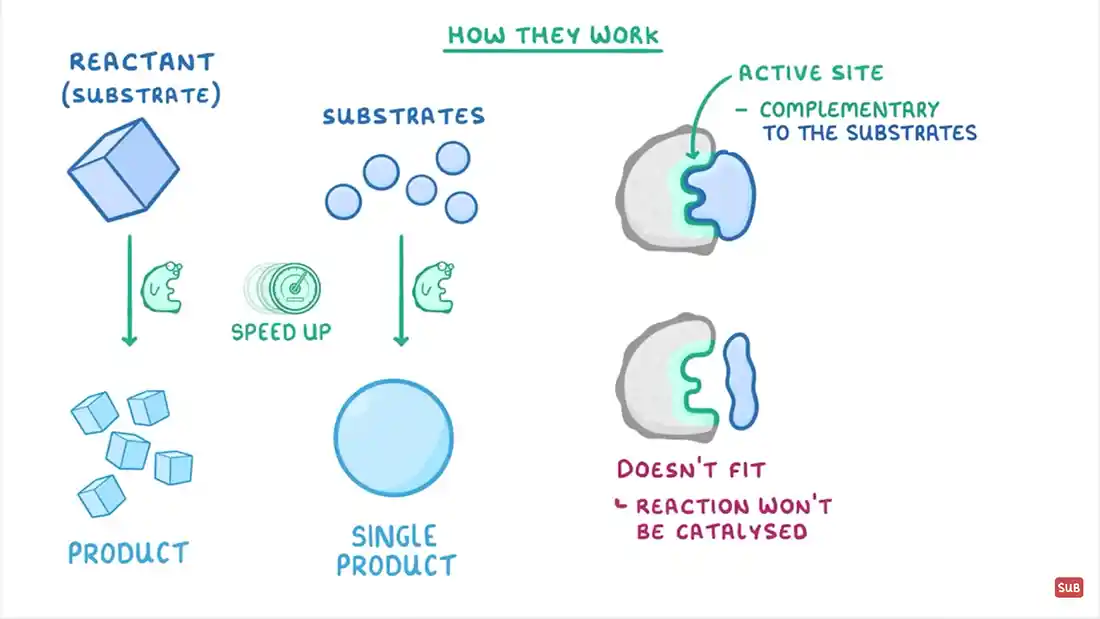
Sounds simple so far, right? That's because in this manner it is. That is the simplest way to explain how an enzyme works. There are several types of enzyme in our body. They are:
Enzymes can work fast, breaking down nutrients into glucose and fructose, or they can work slow and be lazy. This can affect our body in another way, other than just how much energy we have. Enzyme breakdown attributes to our metabolism. A metabolism is a series of chemical processes that allow us to grow, create heat, lose or take on weight, and other factors.
There are two types of metabolism people can have:
High metabolism: this is where you're able to burn calories faster than the average person. It has its advantages, but it's drawback is that you can use up too much energy, or you have trouble gaining any substantial weight.
Low metabolism: this is the opposite of a high metabolism. You will find it easy to gain weight, you might have too much energy, and your body won't burn the calories as fast as the average person.
Your body can go from having a low metabolism to having a high metabolism, simply by exercising more and increasing your lean muscle mass. This turns the fat in your body to muscle, and will probably make you feel better as a result.
The following still is from a video on metabolism, with the following details:
Please click on the image to view the video.
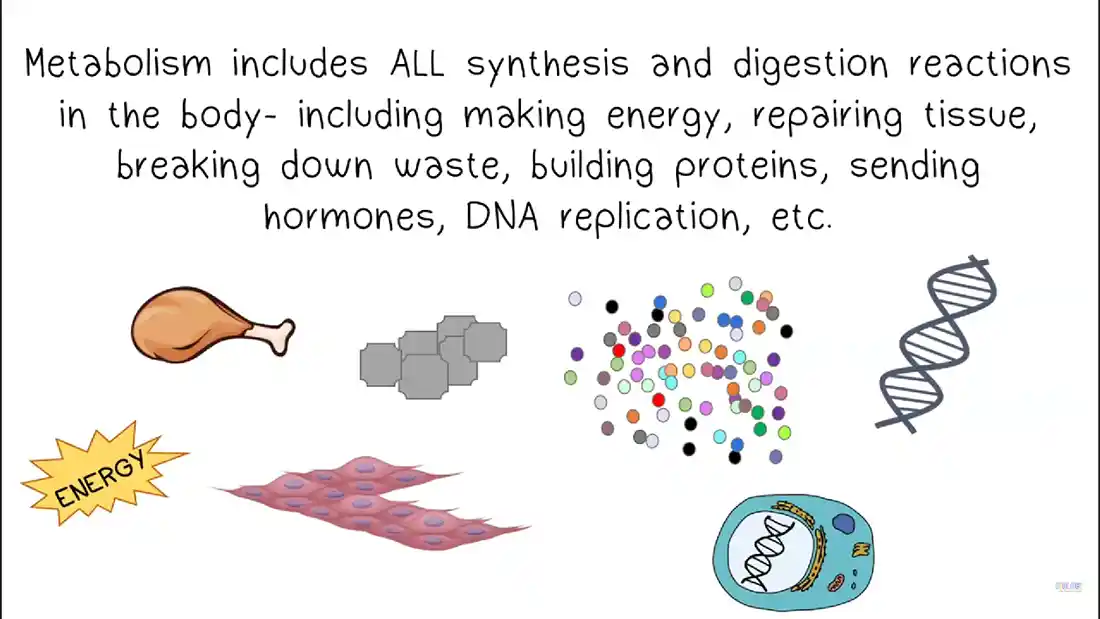
Your food parcel has gone through a lot. By this point, it has gone in the mouth, down the windpipe (oesophagus), through the stomach, through both intestines, and now it sits in the rectum. What does it do here? Well, it is stored until, you know. Until you need to go. By this point, it has no nutrients, and almost everything needed in it has been removed. It is time for removal. The rectum and anus are also included in the excretory system, and their function is to remove waste product from your body.
At the very end of your digestive system is something called a sphincter. This is a small valve that acts like an opening to allow waste product to pass through. When the rectum is full, and you need to poop (ergh, there, you made me say it!) the sphincter opens to allow it to pass.
Try and answer the following questions without looking first:
The stomach. This is where proteins are broken down by enzymes.
Amylase.
Activities to be used in the classroom.


If you are unable to see the board, please click here.
 Cardboard Digestive System Maze by Little Ladoo.
Cardboard Digestive System Maze by Little Ladoo.
Here are a selection of links to items you could buy that would help teach some of the subject materials.
 SmartLab Squishy Human Body - Amazon.co.uk
SmartLab Squishy Human Body - Amazon.co.uk
 Human Body Model for Kids - Amazon.co.uk
Human Body Model for Kids - Amazon.co.uk
Metabolism, eating, healthy, unhealthy, carbohydrates, fats, energy, chemical reactions, castabolism, anabolism, sustenance.
You feel hungry, mainly because you're feeling low on energy. This is okay, as you can eat something with high energy levels in it - a banana, for example. This will bring your energy levels back up from being low. A banana will release energy into your body slowly over a longer period of time than something else, like toast. But why, and how does this do this?
Working on the chemical processes in your body, the metabolism will produce energy. This energy is converted from food to help you carry out everyday functions your body needs to maintain itself.
Specifically, the metabolism breaks down carbohydrates, fats and proteins from the food and drink that you eat, and the energy from these allow your body to do the following functions:
The rate at which your body does these processes is measured in kilojoules, and this can determine whether you have a high or low metabolism.
The following still is from a video on what metabolism is, with the following details:
Please click on the image to view the video.
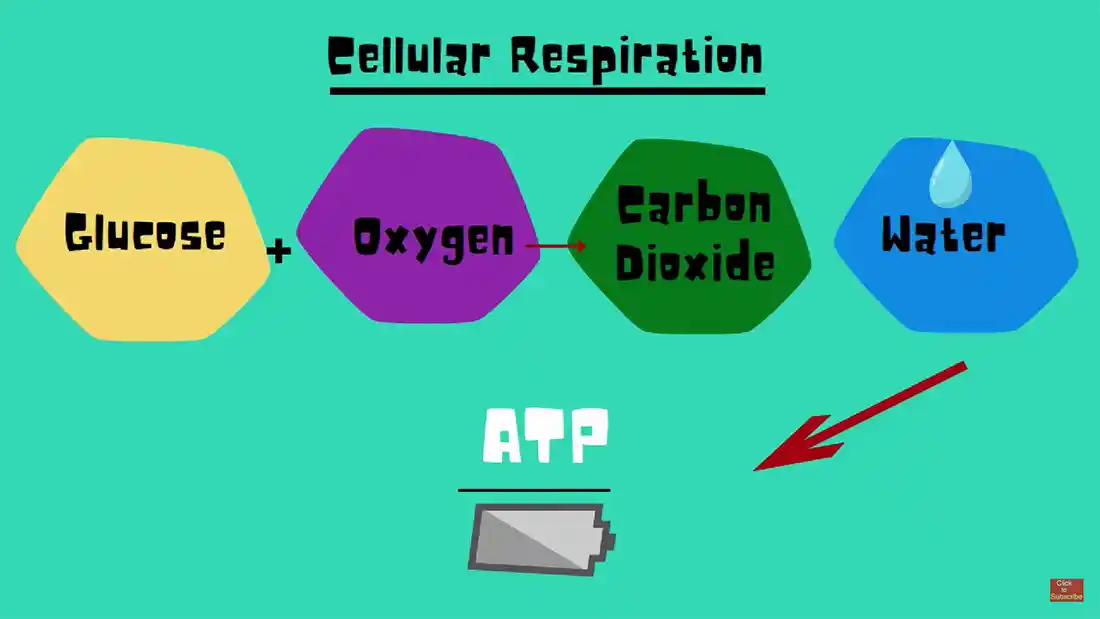
There are two processes that allow your metabolism to produce the energy you will need in your body. All cells in your body are made of protein. This means that your body needs to digest these proteins in order to make new cells, and replace old, damaged cells.
How our body does this is through use of enzymes. Each enzyme in your body (of which there are 5000 of), interacts with the different proteins you eat through the foods ingested.
To do this, a synthesis reaction is needed. There are two main ways this happens. Firstly, there is catabolism, which breaks down the food into simpler forms (this is the process done by the enzymes in your body). It then releases this as energy. Catabolism can be used for carbohydrate and lipid breakdown, and protein catabolism to break down into one of the 20 amino acids.
The second reaction is called anabolism. This uses the energy made for cell growth and repair across the whole body. It creates larger molecules from smaller ones, and can be used in protein synthesis, DNA synthesis and for growth of bones and muscles.

It only takes around 30 minutes of sitting around to stop, slow down and inhibit the metabolism. So, if you are sitting down for long periods of time at work, for example, it's a good idea to get up and exercise every 30 minutes.
There are a number of factors that affect your metabolism, including:
Your metabolism can also affect your health. Depending on which way your metabolism (high or low) can determine the way you are feeling. If obese, you will have more health issues. If very skinny, a similar case in that you will have issues. There is no scientific record that shows you can change your metabolism.
Lock & Key, enzymes, reactions, substrate, denatured.
The lock and key theory of how an ezyme reacts with proteins in your digestive system is how we get glucose and fructose from the foods we eat. The proteins form together with an enzyme to create an enzyme-substrate complex.
So, lock and key. What would you do with an actual lock and key? You have a lock on your door, and to open it, you have to insert a key to open it. But, how does your door know what key is the correct one? It is formed in a combination to be set a certain way, so that only one key can fit the door and be opened.
This is the same as the theory about enzymes. An enzyme has a combination like the lock of the door. When a protein is sought out to break up, it has to be the same combination in order for it to attach and be broken down into sugars.
The following still is from a video on lock and key, with the following details:
Please click on the image to view the video.
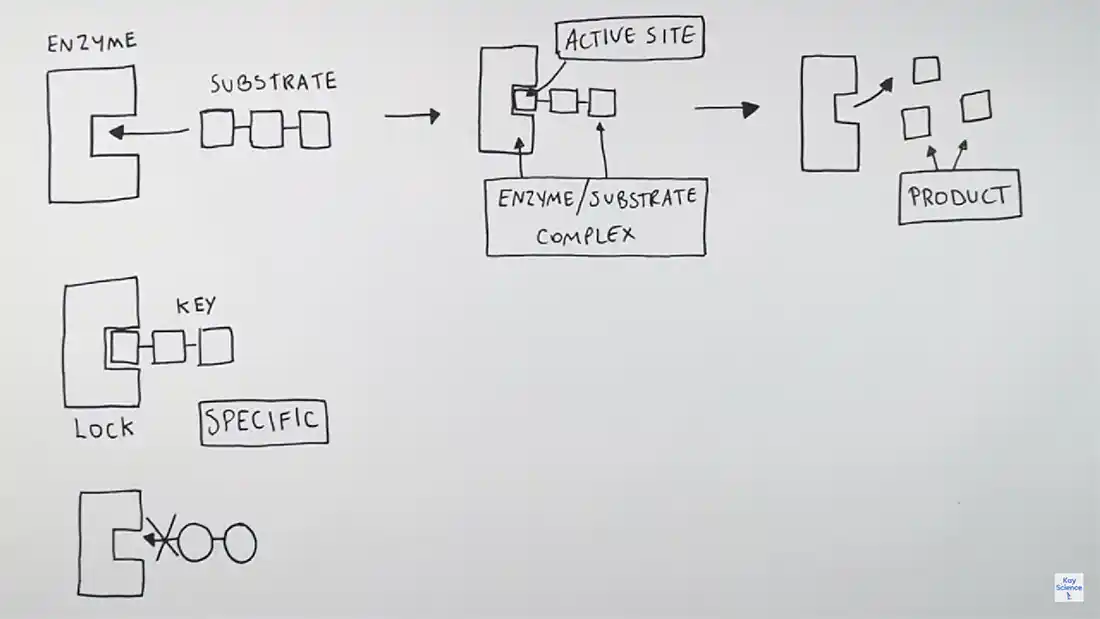

There are over 1,500 enzymes that have been identified as a result of constant research. Some have even had their structure shown through x-ray crystallography, which was made famous by Rosalind Franklin.
There are three molecules that are broken down by enzymes:
An enzyme has to work within a certain range of temperature and pH balance. If the enzyme ends up being exposed to temperature or pH levels outside of this range, it can become denatured, which means that it will stop working and not break anything down.
The following still is from a video on a required practical element, with the following details:
Please click on the image to view the video.
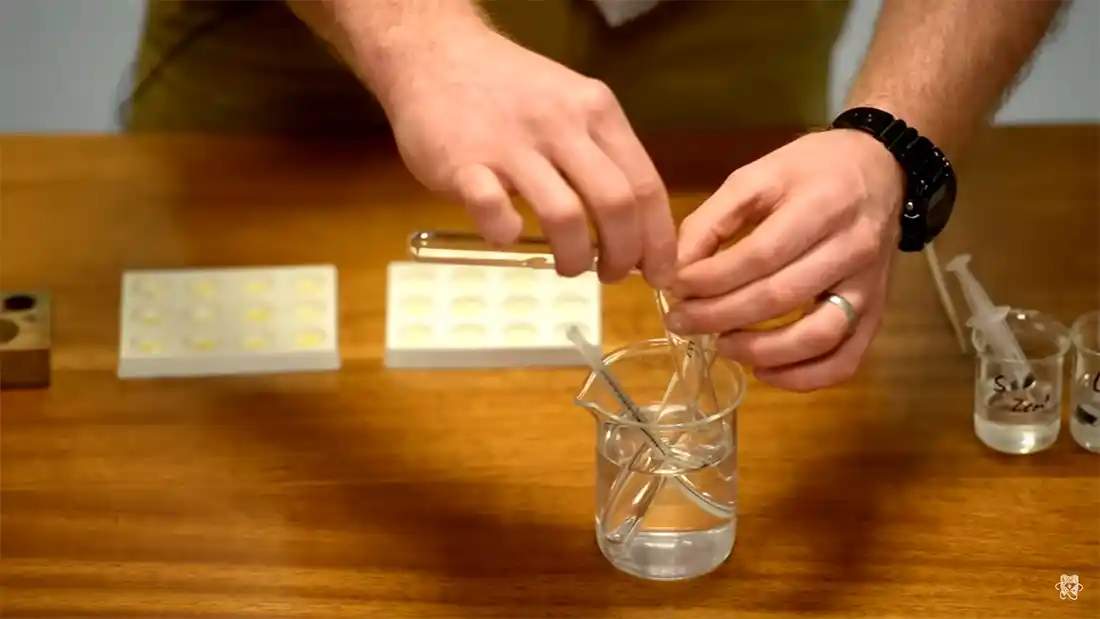
Try and answer the following questions without looking first:
By using an iodine solution, paired with a water bath and spotting tile where a specific amount is placed in at given intervals.
The enzyme would break nothing down due to it being denatured.
Peristalsis, oesophagus, mouth, windpipe, stomach, bile, acid, gastric juice, intestinal, bolus, waves, muscles, absorb nutrients.
When you eat food, it has to go through a jungle in your body. From sitting in your stomach, to being processed through the intestines, and then out the other end. Here we will look at how it moves from the stomach to the intestines through peristalsis.
The definition is this:

A series of wave-like contractions of the muscles that are involved in the food movement and in the movement of other liquid particles in the digestive tract to various processing organs that are located in the digestive system.
But what does this actually mean?
When we eat something (let's say a banana), and it sits in our mouth, we chew it. The saliva in our mouth starts to break down the food there, and once we have chewed it enough, it is swallowed. This is then referred to as oesophagal peristalsis.
Humans are only capable of single-movement peristalsis. Some animals like cattle, sheep and camels are able to perform reverse peristalsis, and this is where the food can be brought back to the mouth for further chewing.
The peristaltic wave continues from the oesophagus into the stomach, as it helps the food mix with the gastric juices - the highly acidic liquid that settles in your stomach to help with breakdown of foods - like your banana. There can be as many as three waves at once when this happens, and then they stop.
The following still is from a video on peristalsis, with the following details:
Please click on the image to view the video.
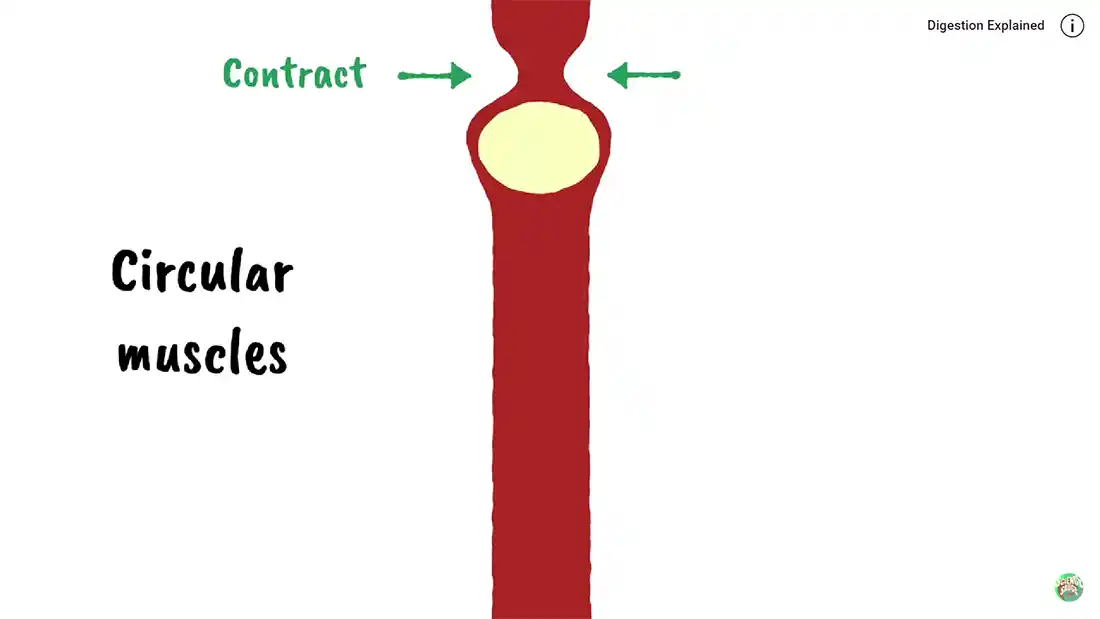

Food takes just 7 seconds to travel from the mouth down to the stomach because of peristalsis. This process also happens in your small intestine when the remainder of the food moves along it and nutrients are removed from it from the villi.
Now, you've eaten your food, it's travelled to the stomach, and the acids in there have broken the food down to acceptable sizes, it then moves to the small intestines. This is where intesinal peristalsis happens.
Your food at this point is no longer classes as food, and has been removed of some nutrients, but still has some way to go. There are still nutrients and proteins to be removed. This is done by lipase, which is an enzyme that helps break down further the remainder of the food, now called a bolus.
Vili are small hair-like structures that line the intestinal tract, and they absorb nutrients and minerals from the food you've eaten. They also help with the muscular movement of the food along the tract. They move back and forth, and work with the smooth muscles in the tract to move it along to the large intestine.
Disclaimer | About Me | Sitemap
Website design by SyntaxHTML.



Blue icons adapted from icons courtesy of Smashicons.com